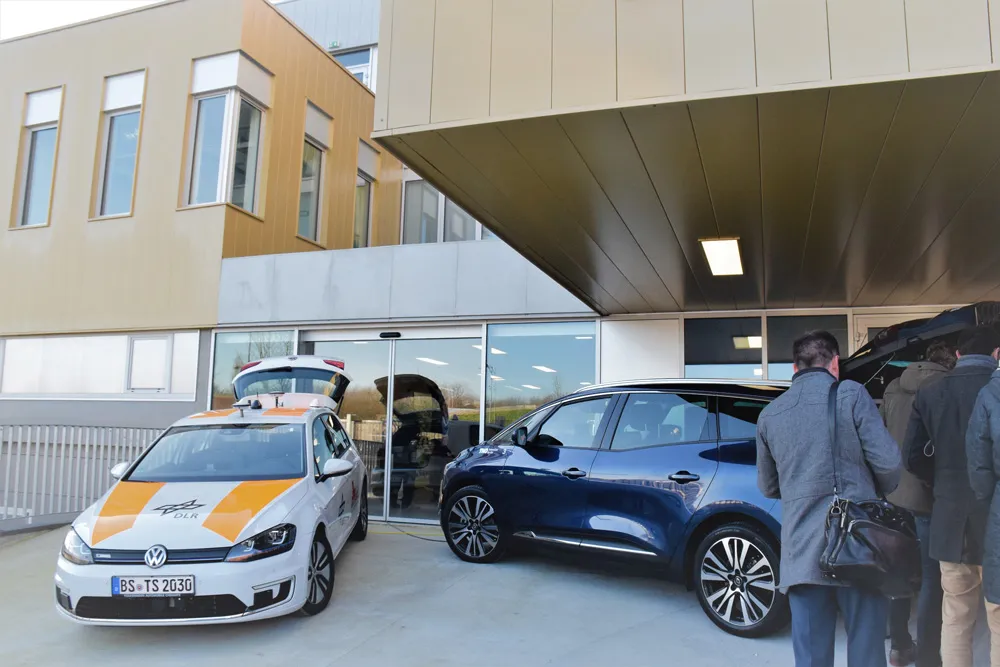A European Commission-sponsored research project took a significant step towards vehicle-to-vehicle (V2V) and vehicle to infrastructure (V2I) when it presented its results at the Dutch DITCM test site in Helmond last week. The event unveiled the Drive C2X reference system, demonstrating for the first time the ability to create a harmonised testing environment across Europe. The research project brings together car manufacturers, research institutes, authorities and information technology providers to provid
July 10, 2012
Read time: 3 mins
RSSA 1690 European Commission-sponsored research project took a significant step towards vehicle-to-vehicle (V2V) and vehicle to infrastructure (V2I) when it presented its results at the Dutch DITCM test site in Helmond last week. The event unveiled the Drive C2X reference system, demonstrating for the first time the ability to create a harmonised testing environment across Europe. The research project brings together car manufacturers, research institutes, authorities and information technology providers to provide a pan-European reference for the communication among cars and between cars and the infrastructure - C2X. The project, started in 2011 with 31 full partners and 15 support partners coordinated by 2069 Daimler, has an overall budget of €18.8 million (US$23.16) with €12.4 million requested contributions from the European Commission.
At Helmond, the partners gave visitors from all over Europe and further afield a first demonstration of the technology on public roads. In a 20-minute demonstration tour they experienced how cars send each other information on potential traffic hazards such as an approaching emergency vehicle or obstacles on the road. Also on display was the new interface which shows three levels of alerts, depending on the urgency of the situation. In total, nine functions were shown: the safety functions weather warning, in-vehicle signage, road works warning, obstacle warning (between cars and from the infrastructure), approaching emergency vehicle, motorcycle approaching indication, and the efficiency function green light optimised speed advisory which allows drivers to find the right speed to pass the next traffic light during a green phase, resulting in a quicker, smoother, safer, and environmentally friendlier traffic flow. In addition to the demonstration ride visitors also were treated to a view of the data collectio
n process at the test management centre of the DITCM test site.
According to Hermann Meyer, CEO of374 Ertico – ITS Europe, “The Drive C2X event at DITCM in Helmond is solid proof of what cooperation between multiple stakeholders can achieve. The creation of a C2X reference system validated through interoperability testing creates the means for deployment of cooperative systems in Europe”
The Drive C2X reference system, shown at this event, will serve as reference software for the six European test sites to deploy interoperable cooperative mobility infrastructure. In parallel, a dissemination and promotion campaign to create public awareness for the benefits of this technology, and to contribute to the scientific exchange in this thriving research area.
At Helmond, the partners gave visitors from all over Europe and further afield a first demonstration of the technology on public roads. In a 20-minute demonstration tour they experienced how cars send each other information on potential traffic hazards such as an approaching emergency vehicle or obstacles on the road. Also on display was the new interface which shows three levels of alerts, depending on the urgency of the situation. In total, nine functions were shown: the safety functions weather warning, in-vehicle signage, road works warning, obstacle warning (between cars and from the infrastructure), approaching emergency vehicle, motorcycle approaching indication, and the efficiency function green light optimised speed advisory which allows drivers to find the right speed to pass the next traffic light during a green phase, resulting in a quicker, smoother, safer, and environmentally friendlier traffic flow. In addition to the demonstration ride visitors also were treated to a view of the data collectio
n process at the test management centre of the DITCM test site.
According to Hermann Meyer, CEO of
The Drive C2X reference system, shown at this event, will serve as reference software for the six European test sites to deploy interoperable cooperative mobility infrastructure. In parallel, a dissemination and promotion campaign to create public awareness for the benefits of this technology, and to contribute to the scientific exchange in this thriving research area.










